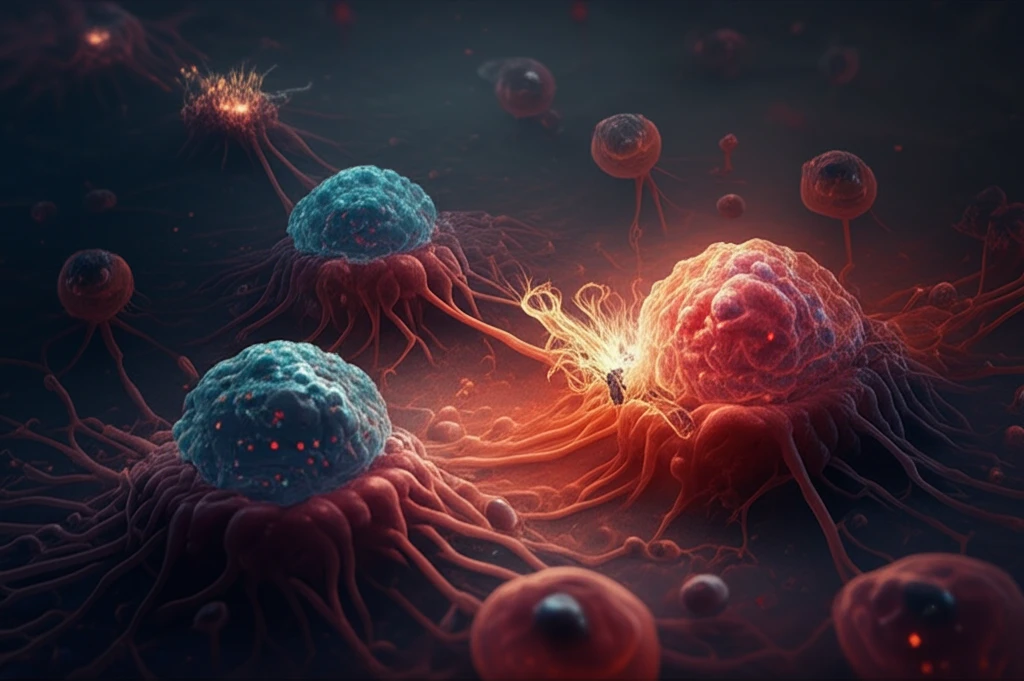
Can Cell Therapy Conquer Leukemia? Promising Strategies for the Future of Immunotherapy
"Exploring innovative cell therapy approaches, including NK and T-cells, to revolutionize acute myeloid leukemia (AML) treatment and overcome challenges in immunotherapy."
In the ongoing battle against cancer, particularly acute myeloid leukemia (AML), innovative approaches are crucial, especially for elderly patients who often face resistance or early relapse after traditional chemotherapy. A recent study highlights the potential of novel immunotherapies to eliminate minimal residual disease (MRD) in AML patients, sparking interest in alternative strategies.
The central idea revolves around harnessing the body's immune system to fight cancer. The loss of interaction between tumor cells and the host's immunity can lead to tumor progression, emphasizing the need for therapies that can restore this crucial connection. Immunotherapy aims to bridge this gap, offering a promising avenue for treatment.
While strategies involving passive and active immunization, such as vaccines and monoclonal antibodies, are common, cell therapy is emerging as a compelling frontier in AML immunotherapy. This approach involves using natural killer (NK) cells and T-cells to target and eliminate leukemia cells, potentially revolutionizing treatment outcomes.
Unlocking the Power of Cell Therapy: How NK and T-Cells are Revolutionizing AML Treatment

Cell therapy is rapidly gaining recognition as a powerful tool in the fight against AML. It involves using the patient's own immune cells or those from a donor to target and destroy cancer cells. The two main types of cells used in this therapy are natural killer (NK) cells and T-cells, each with unique mechanisms of action.
- Enhancing GVL Effect: Donor NK cells boost the graft versus leukemia effect in transplant patients.
- In Vivo Expansion: Adoptively transferred NK cells can expand within the body, leading to clinical improvement.
- Targeting MRD: NK cell immunotherapy can help eliminate minimal residual disease (MRD), reducing the risk of relapse.
The Future of AML Treatment: A Personalized Approach
Cell therapy strategies offer a promising avenue for improving outcomes in AML, especially for elderly patients with poor prognoses. These approaches, characterized by relatively low toxicity, have the potential to enhance treatment efficacy and quality of life. As research continues and technologies advance, personalized cell therapy may become a cornerstone of AML treatment, offering hope for improved survival and remission rates.
